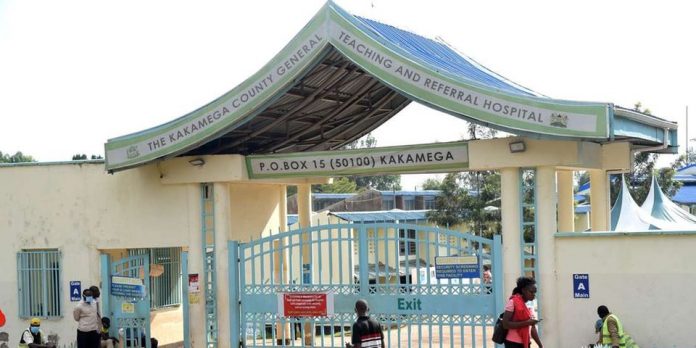Data from the National Syndemic Disease Control Council (NSDCC) shows that 52 per cent of all new infections is among the young people below 29 years.
By Seliphar Musungu, Kakamega
When we first met Miriam Akoth (not her real name), she was a petite woman who looked like a fresh graduate who had just completed her studies.
But looks can be deceiving, Akoth is 38 years old and has been living with HIV/Aids for the last 17 years.
“I had dropped out of school because of pregnancy and now am also HIV positive at 21 years. That was a double tragedy. I made the decision to go back to my boyfriend. After three months, I told him that besides my pregnancy, I was also HIV positive,” said Akoth
“I discovered I was HIV positive on December 16, 2005 when I was pregnant. I had gone for antenatal checkups and after the doctor had conducted some tests, it turned out that I was HIV positive. I was surprised that I had contracted the deadly virus and yet I looked healthy,” said Akoth
In an interview with County Splash, Akoth said what she feared most was what will happen when she breaks the news to her parents.
“I had dropped out of school because of pregnancy and now am also HIV positive at 21 years. That was a double tragedy. I made the decision to go back to my boyfriend. After three months, I told him that besides my pregnancy, I was also HIV positive,” said Akoth

She added: “He got upset when I broke the sad news to him and divorced me. He told me that he wasn’t ready to shoulder the burden of caring for an infected person,”
Akoth said she went home and broke the news to her parents. “It was not easy to tell my parents that I am HIV positive. Remembering how my parents reacted when I told them about the pregnancy, I was so scared to disclose my status to them. After some time, I decided to disclose my status to my mother,”
She said that her mother was also shocked but had to accept the fact that I was living with the deadly virus.
According to Akoth, due to stigma, she tried committing suicide as well as terminating the pregnancy but all was in vain, adding that the baby would later die after giving birth.
“People living with HIV/Aids find it difficult to take Antiretroviral (ARV) drugs as prescribed by the doctor. Most of them say it is tiresome. For me, I started with seven tablets of ARVs in order to control the viral load,” said Akoth

She went on: “I used to take seven tablets once a day. It was not easy since the tablets themselves can discourage someone. As time went by the number of the drugs, we used to take started reducing to four and now taking only one tablet every day.”
According to Akoth, she would later get married and her child is HIV negative
“After taking my medication seriously and counseling my life became so smooth and my viral load has never gone up. I have never suffered from ailments like tuberculosis that normally affect people living with the virus,” said Akoth.
Alex Otunga (not real name), is also living with HIV/AIDS. He is a Peer Educator advocating for people living with HIV/AIDS in Kakamega County.
“It was hard for my to accept that she was HIV positive. She always accused me of infecting her with the virus. She lived in denial and never took her medication seriously. The stigma was also high since all the villagers knew my family was HIV positive and come 2017, she succumbed to the virus,” said Otunga
It took him some time before he discovered that he is HIV positive until 2008 when he was sick.
“I was sick and taken to the hospital where I was to undergo an operation. After diagnosis, medics found out that I didn’t have enough blood and therefore I needed blood transfusion. The medics took my blood for testing and it’s here; I was found to be HIV positive,” said Otunga

He said that the medics never disclosed it to him that he was HIV positive and instead, they gave him ARV drugs, adding that he had never seen the drugs before and thought that it was just normal drugs.
A new report that was released during the World Aids Day shows that new HIV infections have increased for the first time in 10 years with more than 2,000 cases from 32,025 in 2021 to 34, 540 in 2022.
“Since I had never seen ARV drugs before I thought they are normal medicine to heal my sickness. After two weeks I went back to the hospital. That’s when the medics disclosed to me that I was HIV positive and that the drugs I was taking were ARVs,” said Otunga
He said that he took his wife and the child to the hospital and after tests were conducted, they both turned negative but after two weeks, his wife turned HIV positive.

“It was hard for her to accept that she was HIV positive. She always accused me of infecting her with the virus. She lived in denial and never took her medication seriously. The stigma was also high since all the villagers knew my family was HIV positive and come 2017, she succumbed to the virus,” said Otunga
According to data from the Kakamega County Teaching and Referral Hospital (KCTRH), over 45,000 people in Kakamega are living with HIV. In 2021 the infections were high compared to this year 2022. In 2021 Kakamega recorded 6.6 per cent increase of HIV infections, this year the percentage reduced to 3.2 per cent.
In the country, at least 4.2 million Kenyans are living with HIV. Last year alone, more than 6000, 000 people died of the virus.
Dr Ruth Kapanga, the Kakamega County Aids and STI’s coordinator said that this year Kakamega County has recorded a lower number of infections compared to last year. She said that although the county has recorded a low number of infections.
She said some sub counties had started recording increase in the number of new HIV infections, saying Shinyalu and Lurambi constituencies were leading the pack in the number of new HIV infections.
Doctor Kapanga said that as a department they have noted new infections of HIV/AIDS this is from the adolescence and the youth age between 15-24 years.

“We have noted new HIV infections in the county are from the teenagers and the youth between the age of 15-24 years. This is so alarming. Failure to use protection among these age group during sexual intercourse is one of the major contributing factors to new infections,” said Dr Kapanga
Kapanga said despite the fact that there are enough essential commodities in the hospitals like PREP, PEP, test kits and condoms, they were not coming for them after being exposed to the virus.
Kapanga also said that some of the cultures like wife inheritance have contributed to the increase of new HIV infections.
A new report that was released during the World Aids Day shows that new HIV infections have increased for the first time in 10 years with more than 2,000 cases from 32,025 in 2021 to 34, 540 in 2022.
According to the report the new HIV infections are among children, adolescents and the youth. The report attributed it to lack of essential HIV commodities like PReP and condoms.

The report dubbed: ‘it is a race against time by the National Syndemic Disease Control Council (NSDCC) shows that of the 34,540 new cases, 70 per cent (20,505) occurred among women and girls with 8 out 10 new HIV infections being among teenage and young women aged between 15-24 years.
The report revealed that 52 per cent of all new infections occurred among adolescents and young adults aged 15-29 years with 26 per cent among 30 to 44 years, infants and children between the ages 0 to 14 contributed to 15 per cent of all the new infections with 45 and above contributing to 7 per cent of the infections.
According to the NSDCC report, the new HIV infections are dominant among children and younger adults below the age of 34, while the larger cohort of the people living with HIV is older adults, many of whom might have been infected at a younger age, according to the survey.
Ends




